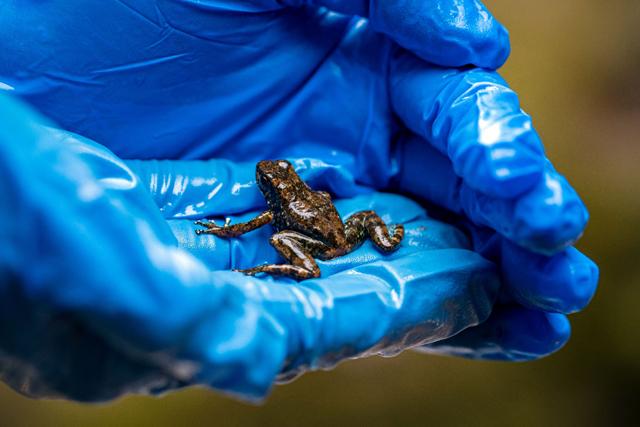You are here
In Ecuador, pair of Andean condors revives hope for species' survival
By AFP - Sep 24,2020 - Last updated at Sep 24,2020

On a cliff in Ecuador, a pair of Andean condors breed more successfully than usual -- one young per year -- and astonish conservationists, who have been spying on them for seven years already, as these wild lovers boost hopes the endangered species can be saved (AFP photo)
QUITO — On a rocky outcrop in an Ecuadoran nature reserve, a pair of prolific Andean condors are giving conservationists a glimmer of hope that the species, under threat from poisoning and hunting, could yet survive and thrive.
The massive Andean condor (Vultur gryphus), which calls the South American mountain range home, has a 3.5-meter wingspan, making it one of the largest flying birds.
"This couple of condors is the most impressive and most prolific pair we know of for this species," says biologist Sebastian Kohn, director of the Andean Condors Foundation, which works closely with Ecuador's environment ministry.
Researchers have been observing the pair in the Chakana private nature reserve, set on the slopes of the Antisana Volcano, for the past seven years.
"Since 2013, when we first started studying them, they have already had seven chicks," said Kohn, whose team observes the birds with binoculars from a watchtower in the reserve, 50 kilometres southeast of Quito.
Normally, these long-lived monogamous birds reproduce slowly, a mating pair usually only producing a chick every two or three years.
Researchers say the likely reason for this pair's high reproduction rate is good access to food, especially carrion, and the feeling of security provided by being in the reserve.
But biologists are still concerned about the future of the species in Ecuador, and indeed throughout the mountain range.
Kohn says Ecuador -- where 150 individuals were identified for a 2018 census -- should raise its "critical alert level" for the species.
Globally, there are some 6,700 condors but numbers are declining. The International Union for the Conservation of Nature (IUCN) classifies the condor as "near threatened" on its watch list.
On another rocky outcrop in the reserve, at about 4,100 metres above sea level, is the main perch where about 40 of the birds have been spotted.
Kohn said that over the last two years, "we have lost 15 to 20 individuals, mainly due to poisoning" linked to the consumption of contaminated carrion meant for livestock predators, in addition to hunting.
In September, one of the birds, which researchers had named Iguinaro, was found dead. It had been released into the Chakana reserve only in May after being treated for gunshot wounds.
Related Articles
TALAGANTE, Chile — Alhue and Mailen were born in captivity but conservationists hope to free the chicks soon as part of a project to boost C
JUNÍN, Ecuador — On the banks of a crystalline waterfall, biologist Andrea Teran lets out a yelp.She holds in the palm of her hand one of tw
QUITO — Quito is a city beleaguered — its shops shuttered and streets empty of all but thousands of Indigenous protesters clamoring fo
















